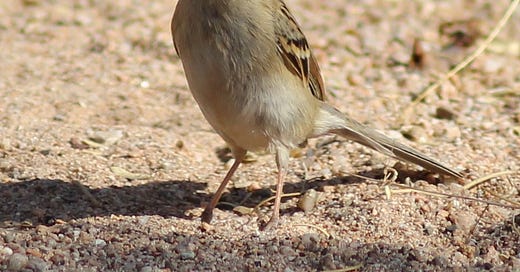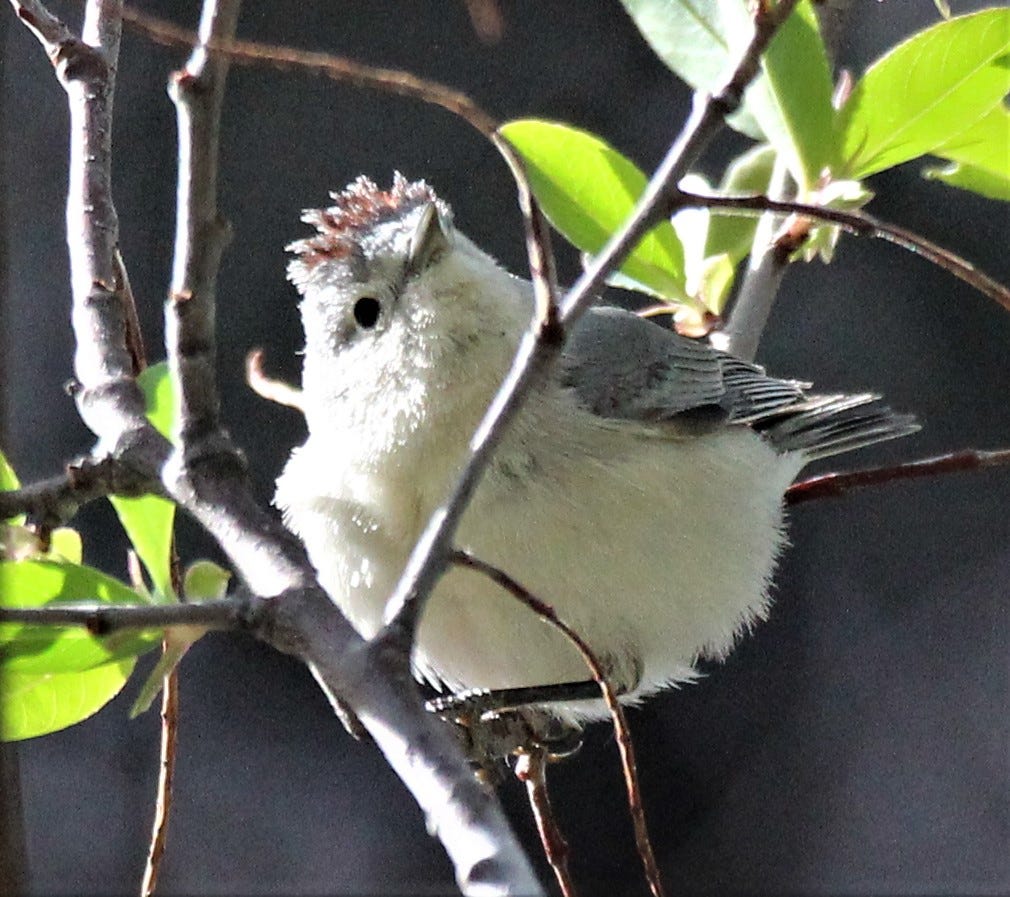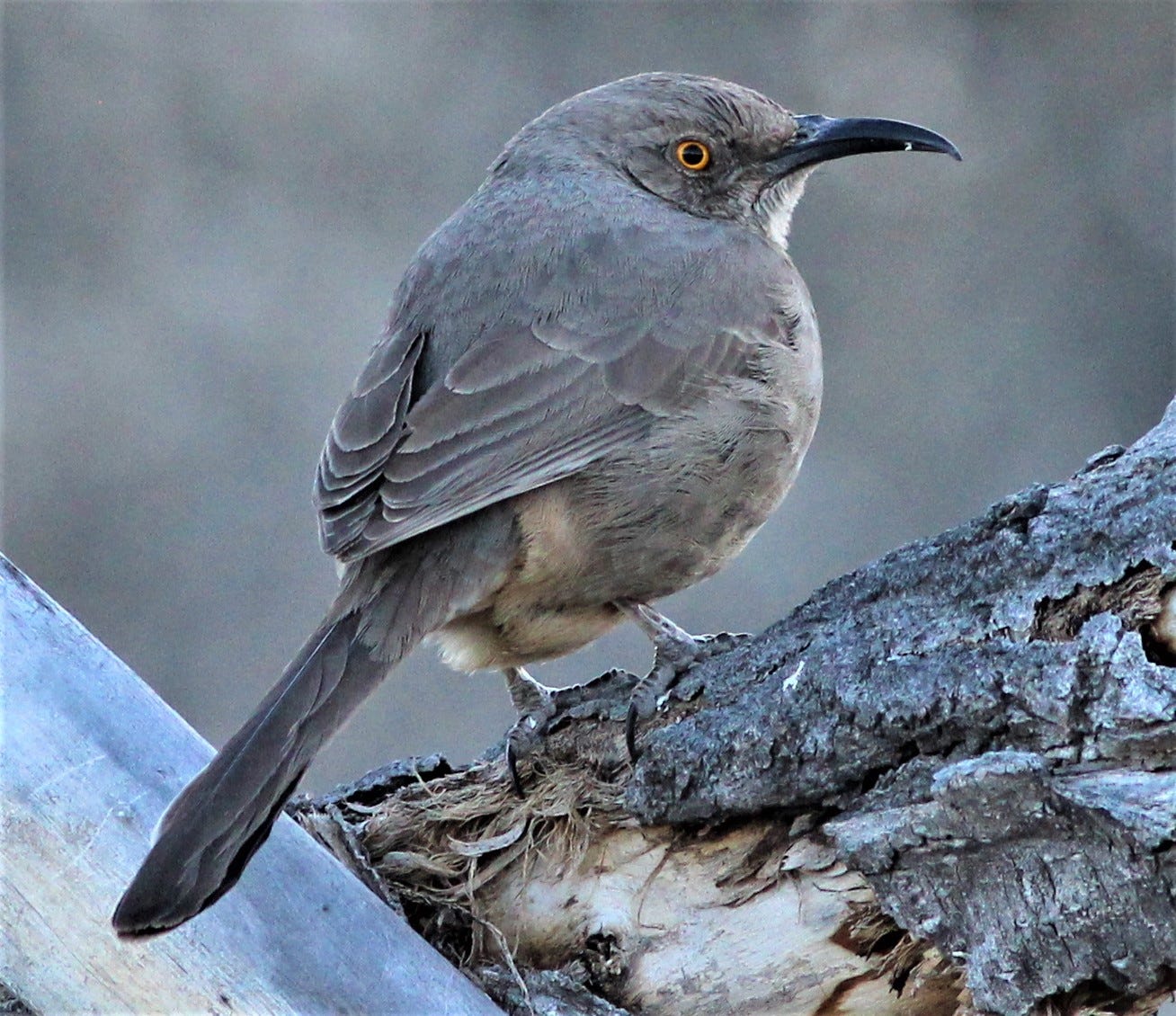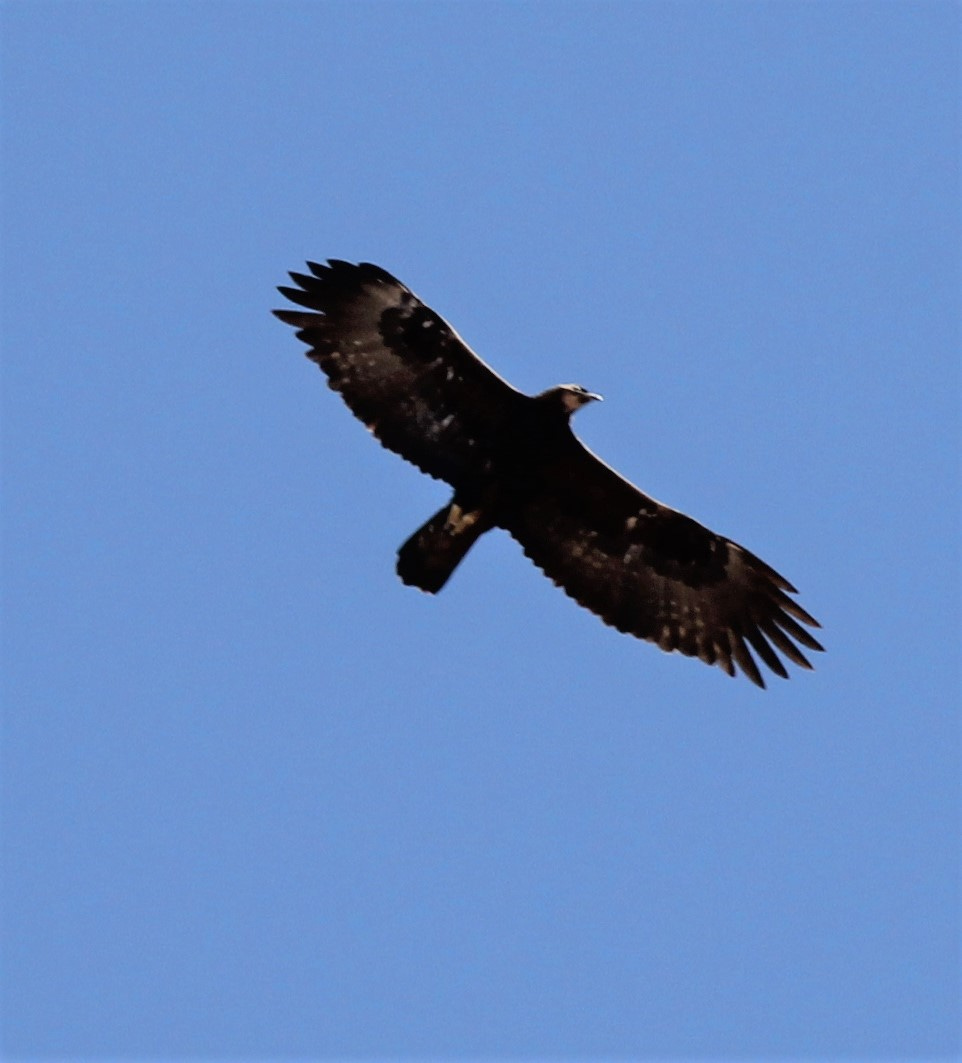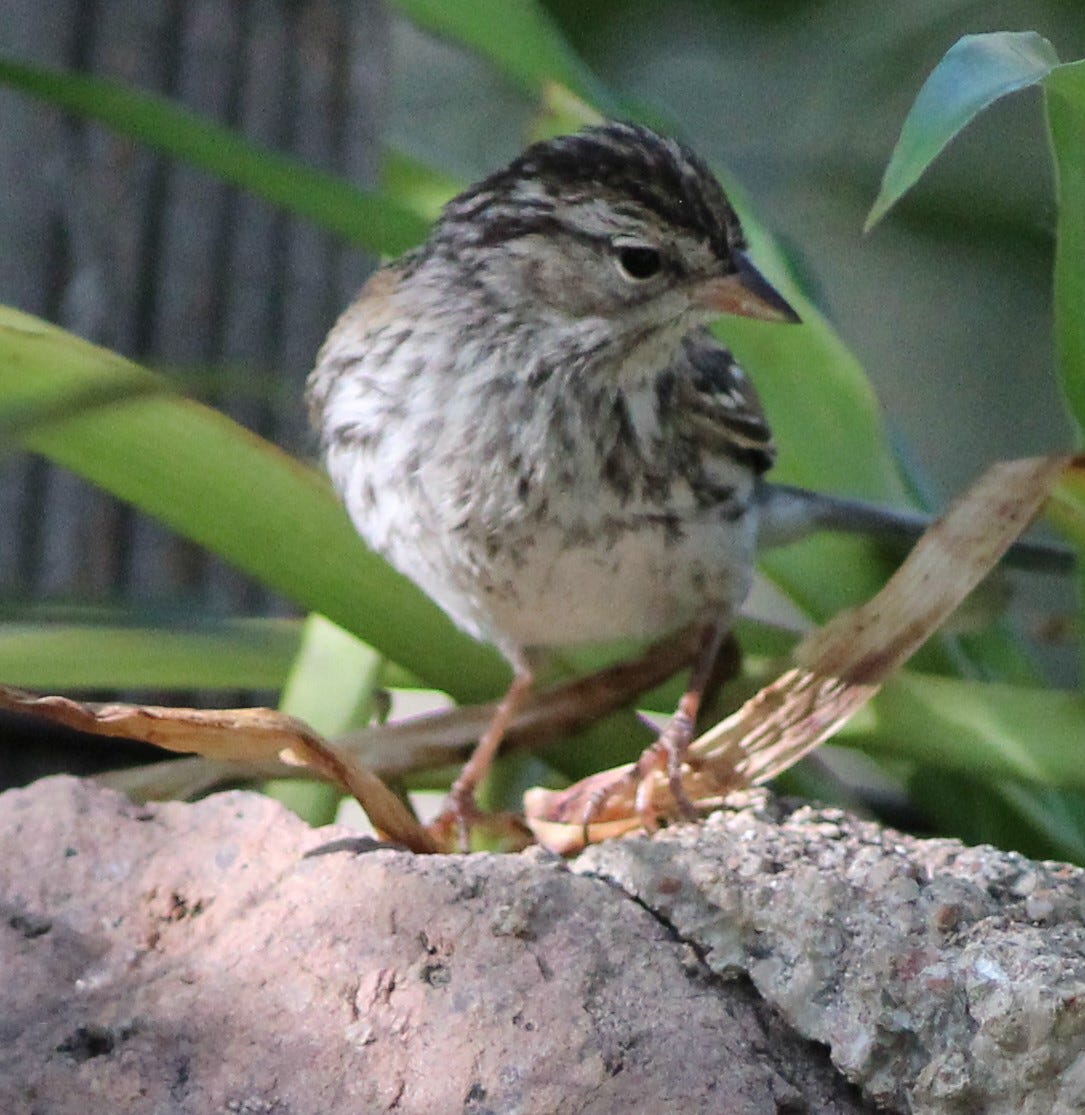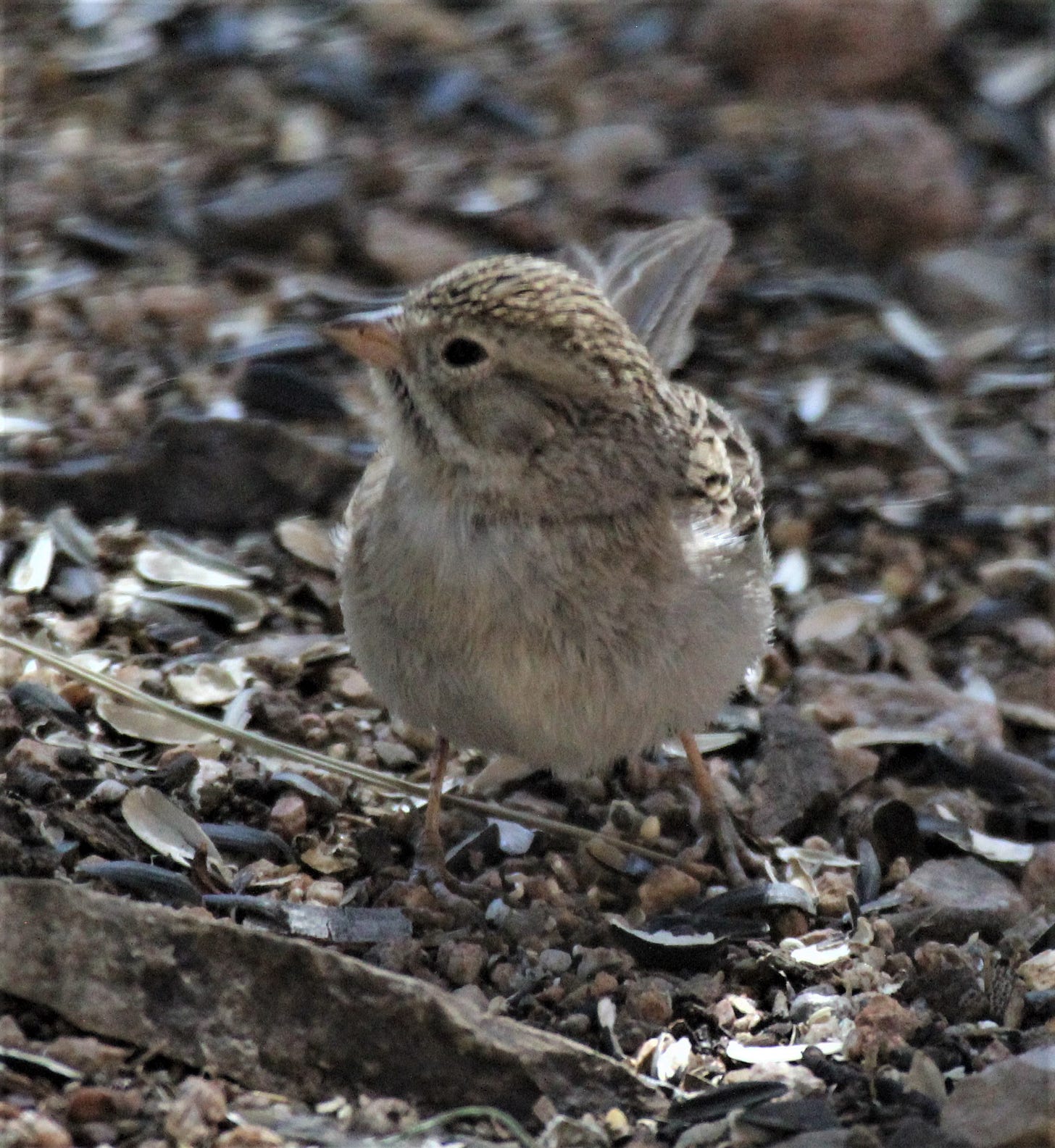Day 218 of the Quarantine (October 19, 2020)
First Daughter and I hike in black masks along Speeden Wash to her wildlife cameras under the I-10 culverts in the 3000-acre Empire Ranch. She is here to document the migrations of bear and mountain lion, bobcat, badger, and coati by using her tracking skills, roadkill surveys, and 36 cameras and 14 volunteers. I’m here for the birds.
Last summer, I listed two dozen species here, including several raptors and the tiny, gray “mesquite warbler” with the rufous rump and crown named for the daughter of a nineteenth-century ornithologist and the first curator of the Smithsonian Institution: Lucy Hunter Baird, an expert naturalist and scientist in her own right, came from a family and history of strong, independent, and intellectually curious women. Which isn’t surprising to me. I’m surrounded by such women.
This morning, trailing behind Jessica, I count the birds on one hand. A pair of cactus wrens rattles somewhere unseen. A curve-billed thrasher becomes mesquite shadow. The desert is cool and quiet—quiet, at least, until we reach the freeway. While Jessica pulls the flash drives and changes batteries on cameras we previously glued to the concrete culverts, I search for Lucy’s warblers in the usual places but find none. Despite the one in my yard last week—a first-ever and number 129 on my yard list—I imagine most have already made the fall journey back to their favorite desert-riparian habitat in southwestern Mexico.
When she finishes and we hoist our packs, a small sparrow lands in the sand in front of us. I see a rusty crown and think juvenile white-crowned sparrow, another common winter bird, but snap four pictures anyway. Species number five for the day.
This evening, as usual, I download the day’s photos and begin deleting them—mostly scores of images either out of focus or of subjects I don’t recognize or remember. Why did I take a dozen fuzzy pictures of this white-thorn thicket? The joys of digital technology. When I come to the sparrow at Speeden Wash, my finger pauses over the delete key. I enlarge the image and see a buffy breastband rather than dingy gray. It’s not a white-crown. Maybe a chipping or Brewer’s sparrow? But the lores are pale. And the cheek patch looks well defined above a dark “mustache.” The breast feathers seem almost the color of clay…
With rising excitement, I post two blown-up pictures of the sparrow to my birding friends on social media and get an immediate response: clay-colored sparrow! A rare transient in Arizona and a species I’ve never seen before.
A purest wouldn’t count a bird identified by a photo after the fact, especially if the ID came with assistance. “Real” birders have rules, a code to live by. Good thing I’m not a purest. To quote Captain Barbosa, my code “is more what you'd call guidelines than actual rules.”
Clay-colored sparrow. Life bird #437.

Thanks For subscribing!
